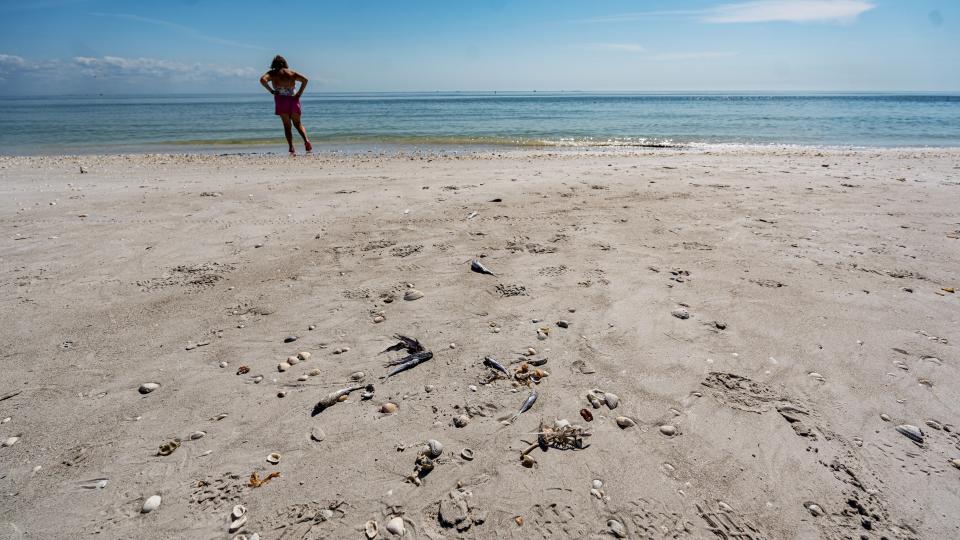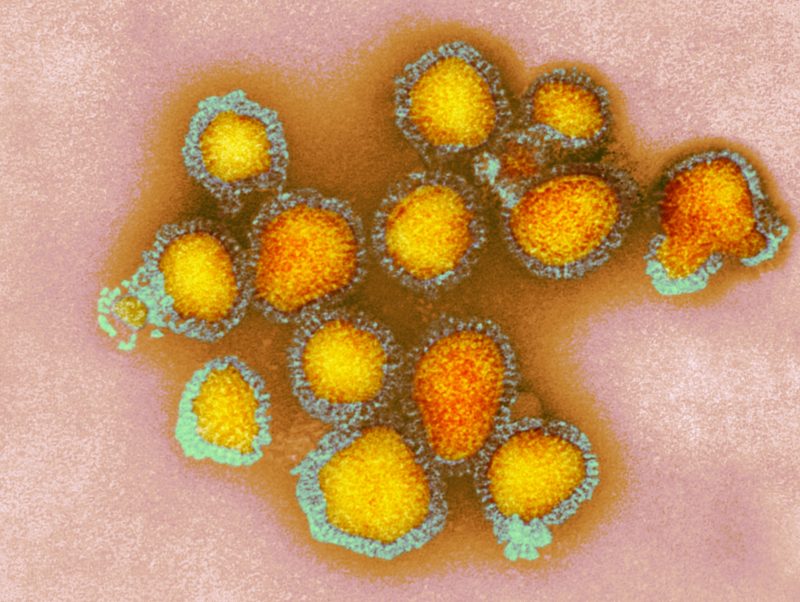Red tide cell counts are well into the “death zone” in Lee County waters as toxins in the Gulf have turned normally turquoise waters copper.
The Florida Department of Health in Lee County issued an advisory Wednesday afternoon for places like Bonita Beach and Sanibel. DOH in Collier issued advisories for Barefoot Beach State Preserve and the Vanderbilt beach area.
“Do not wade or swim in or around red tide,” the Lee advisory says. “Red tide can cause skin irritation, rashes, and burning/sore eyes. Wash your skin and clothing with soap and fresh water if you have had recent contact with red tide, especially if your skin is easily irritated.”
DOH has sent out several advisories in recent weeks as bloom counts have range from natural, background levels to 1 million cells per liter and more.
Notices were sent out Wednesday about Blind Pass, the Bokeelia fishing pier and Bowditch Park.
Caused by the Karenia brevis organism, red tide has been documented here for centuries, although research shows that blooms are more frequent and stronger than they were several decades ago.

A small quantity of small dead fish are seen littering the beach at Gulfside City Beach Park on Sanibel on Wednesday, Feb. 5, 2025. Red tide has been documented off the coast of Southwest Florida including Sanibel. Some areas are seeing dead fish.
“(Red tide) produces potent neurotoxins (brevotoxins) that can be harmful to the humans, pets, fish, and wildlife,” DOH says. “Wind and wave action can break open cells and release toxins into the air. This is why you should monitor conditions and use caution when visiting affected water bodies.”
High red tide levels, advisories reported in Lee and Collier

Beachgoers are seen at Gulfside City Beach Park on Sanibel on Wednesday, Feb. 5, 2025. Red tide has been documented off the coast of Southwest Florida including Sanibel. Some areas are seeing dead fish. Small fish could be seen littering the beach in small quantities.
The Florida Fish and Wildlife Conservation Commission is the state agency charged with tracking red tide, and FWC reported high levels in Lee waters.
The bloom has at times stretches from Tampa Bay to the Florida Keys.
“Over 20 million a cells per liter off Sanibel, and that’s the high kill-zone level,” said Calusa Waterkeeper Emeritus John Cassani. “That was a couple of days ago and the last aerial pictures I saw, it seems like it went south and is back north again.”

A small quantity of small dead fish are seen littering the beach at Gulfside City Beach Park on Sanibel on Wednesday, Feb. 5, 2025. Red tide has been documented off the coast of Southwest Florida including Sanibel. Some areas are seeing dead fish.
A pilot flying on behalf of the Calusa Waterkeeper took photos recently and posted them on Facebook.
The images show copper-stained waters in the Gulf and massive patches of toxic water.
“It’s increasing in frequency and duration and strength over time,” Cassani said.

Beachgoers are seen at Gulfside City Beach Park on Sanibel on Wednesday, Feb. 5, 2025. Red tide has been documented off the coast of Southwest Florida including Sanibel. Some areas are seeing dead fish. Small fish could be seen littering the beach in small quantities.
Fish kills have been reported recently in Lee and Collier counties, according to the Florida Fish and Wildlife Conservation Commission.
Fish kills and deaths of marine mammals and birds can start once levels reach 10,000 cells per liter, according to FWC.
The outbreaks can also impact air-breathing animals like birds, dolphins, sea turtles and even humans.

A red tide alert sign is seen at beachside at Gulfside City Beach Park on Sanibel on Wednesday, Feb. 5, 2025. Red tide has been documented off the coast of Southwest Florida including Sanibel. Some areas are seeing dead fish.
“There is concern with red tide because the birds can get infected with red tide and it has neurotoxins” said Megan Hatten, a shorebird expert with Audubon Florida. “It usually doesn’t affect the shorebirds too heavily at first. The cormorants and the pelicans are usually the harder hit ones.”
This article originally appeared on Fort Myers News-Press: Red tide alerts regarding toxic Gulf waters issued in Lee, Collier, FL
#Red #tide #raging #Gulf #cell #counts #hit #million #cells #liter #Sanibel












Leave a Reply